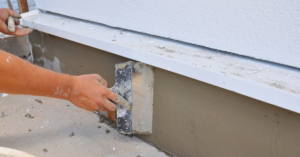Choosing Between Traditional Stucco and Synthetic Stucco

Are you thinking about fixing up your home and making some improvements to give it that wow factor? Have you been tossing around the idea of stucco but aren’t sure what your options are? We understand. When you’re trying to pick out the materials for a stucco wall or find the perfect exterior finish for your home, Robey knows how important it is to choose carefully. You’ll want to be thoroughly informed about all your options since this decision can significantly impact your property’s durability and appearance. That’s why we’re going to walk you through all the ins and outs of stucco walls, and compare the two main types so you can see for yourself all of the benefits and fully understand what you should consider.
What is Traditional Stucco?
Let’s start with the classic choice: The original type of stucco is primarily made up of lime, sand, water, and cement. The application of this type of stucco wall involves a meticulous three-coat process resulting in a sturdy, breathable surface. It’s designed to be long-lasting, and it gives your home an appealing aesthetic that complements many different types of architectural styles.
Its popularity is partly due to its ability to withstand a multitude of weather conditions while also allowing the underlying structure to breathe. This is important, especially in climates that are more likely to suffer from high humidity. It’s an issue in areas with great temperature variations, because that’s where you need to ensure moisture is managed for long-term structural integrity. It will also give your home a classic appearance which will elevate your home’s curbside appeal.
The Appeal of Synthetic Stucco (EIFS)
On the other hand, synthetic stucco, also known as Exterior Insulation and Finish System (EIFS), is a more modern approach to exterior finishes. This innovative system uses an insulation board, a base coat, reinforcement mesh, and a finish coat. All of these can be applied in a single-coat process, which can save you time. This style also boasts enhanced energy efficiency, flexibility in design, and it’s lighter in weight when compared to its counterpart traditional stucco.
During the 1970s and 1980s there was a surge in EIFS popularity, largely due to the energy crisis that was sparking a growing demand for energy-efficient building materials. By integrating insulation directly into the exterior cladding, EIFS improves a building’s thermal performance and reduces its heating and cooling costs over time. This system’s flexibility allows for intricate architectural designs along with varied textures designed to cater to contemporary tastes and construction trends.
Key Differences You Should Know
You can’t easily choose between traditional and synthetic if you don’t understand their differences. Let’s take a look:
Composition and Application: The traditional style relies on a cement-based mixture and a labor-intensive application process. Synthetic on the other hand, integrates insulation and uses a quicker application method.
- Durability and Maintenance: While a traditional stucco wall offers excellent longevity and breathability, it requires skilled application to prevent cracking. EIFS is less susceptible to cracking, but it demands careful attention to moisture management in order to avoid any potential issues.
- Energy Efficiency: The Synthetic style is highly energy efficient thanks to its integrated insulation that reduces its thermal bridging and improves overall building envelope performance. Meanwhile,the traditional style isn’t as energy efficient.
- Aesthetic Versatility: The Traditional style offers a timeless appeal thanks to its natural texture and earthy tones. This makes it ideal for rustic or Mediterranean-inspired designs. Meanwhile, synthetic offers flexibility in color options and texture finishes, appealing to modern architectural styles and creative exterior expressions.
Factors to Consider
Choosing between traditional stucco walls and synthetic ones depends on several factors:
- Climate Considerations: The traditional style’s breathability makes it suitable for a wide range of climates, while synthetic stucco’s insulation properties are preferred in colder areas.
- Budget and Aesthetic Preferences: Your budget constraints and desired architectural style will play a significant role in deciding between these two options.
- Long-Term Maintenance: Take a moment and think about the long-term maintenance requirements as well any potential repair costs that are associated with both of these.
Making an Informed Decision
We believe in giving our clients the information and empowering them so they can make informed decisions. Whether you decide to go for the time-tested durability of traditional or the innovative benefits of synthetic, our team is always here to give you expert guidance to meet your needs. We know it’s a big decision, and we’d like to invite you to take a look at our portfolio so you can see the quality of work you’ll be receiving.
Your Choice
Choosing between traditional stucco walls or synthetic ones requires thinking about more than just what looks best—it’s also about making sure your home’s exterior can stand up against bad weather while also enhancing its curbside appeal. We’ve taken a look at the defining features and advantages, and considered both options to help you make this important decision.
Ultimately, the right choice will be the one that best meets your home’s unique needs, your personal style, and your long-term vision for your property. For personalized advice and expert stucco solutions, reach out to Robey today. Let’s build your home’s exterior with the confidence and durability that’s designed to last for many years to come.
